Abstract
Studies were undertaken to further characterize the spinach (Spinacea oleracea) chloroplast envelope system, which facilitates H+ movement into and out of the stroma, and, hence, modulates photosynthetic activity by regulating stromal pH. It was demonstrated that high envelope-bound Mg2+ causes stromal acidification and photosynthetic inhibition. High envelope-bound Mg2+ was also found to necessitate the activity of a digitoxinand oligomycin-sensitive ATPase for the maintenance of high stromal pH and photosynthesis in the illuminated chloroplast. In chloroplasts that had high envelope Mg2+ and inhibited envelope ATPase activity, 2-(diethylamino)-N-(2,6-dimethylphenyl)acetamide was found to raise stromal pH and stimulate photosynthesis. 2-(Diethylamino)-N-(2,6-dimethylphenyl)acetamide is an amine anesthetic that is known to act as a monovalent cation channel blocker in mammalian systems. We postulate that the system regulating cation and H+ fluxes across the plastid envelope includes a monovalent cation channel in the envelope, some degree of (envelope-bound Mg2+ modulated) H+ flux linked to monovalent cation antiport, and ATPase-dependent H+ efflux.
Full text
PDF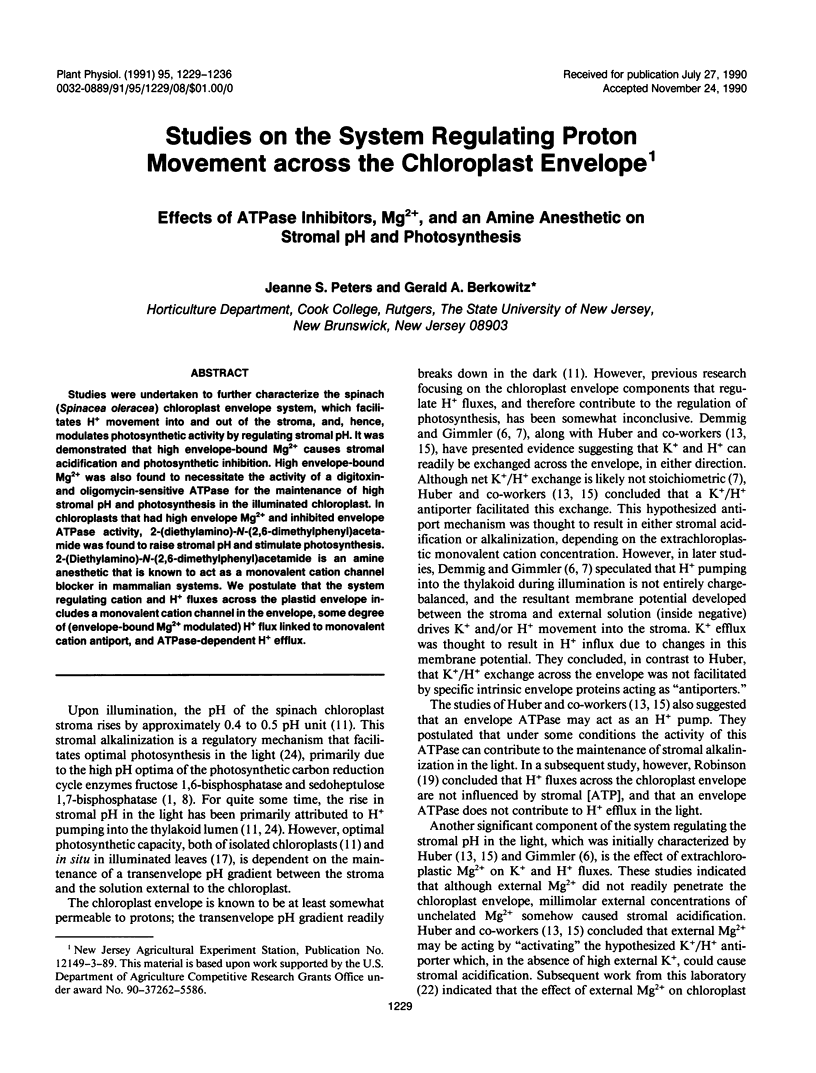
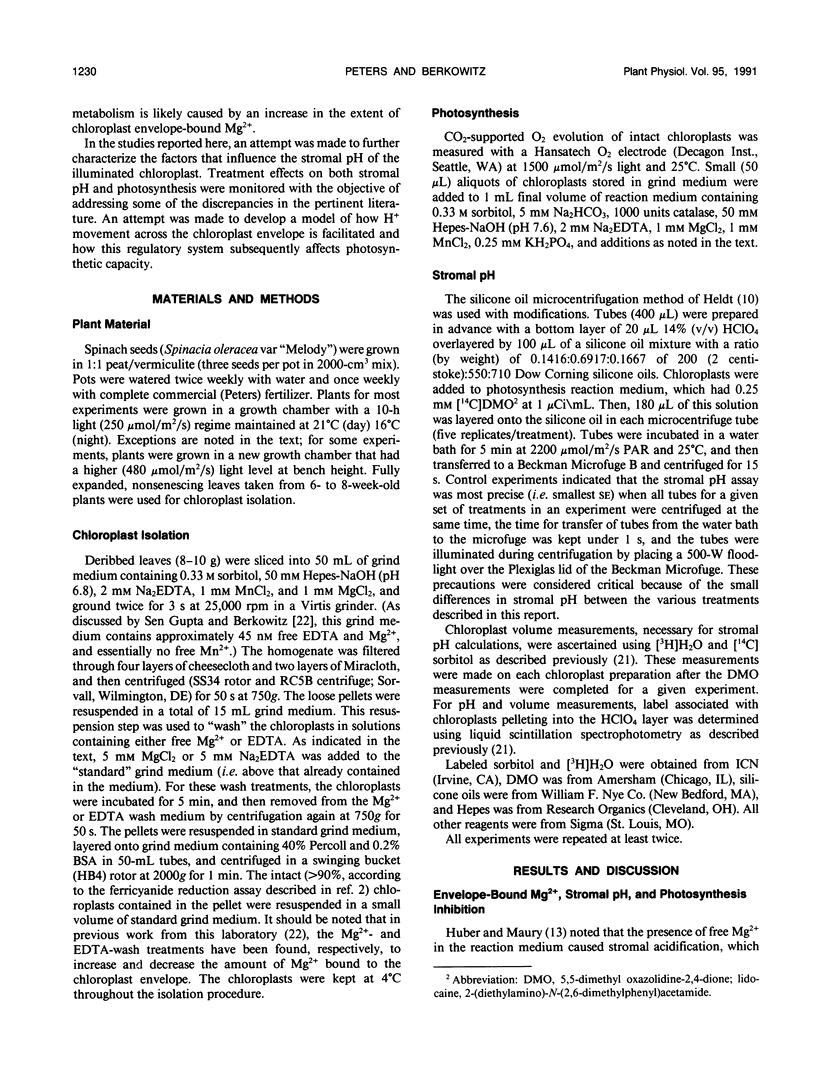
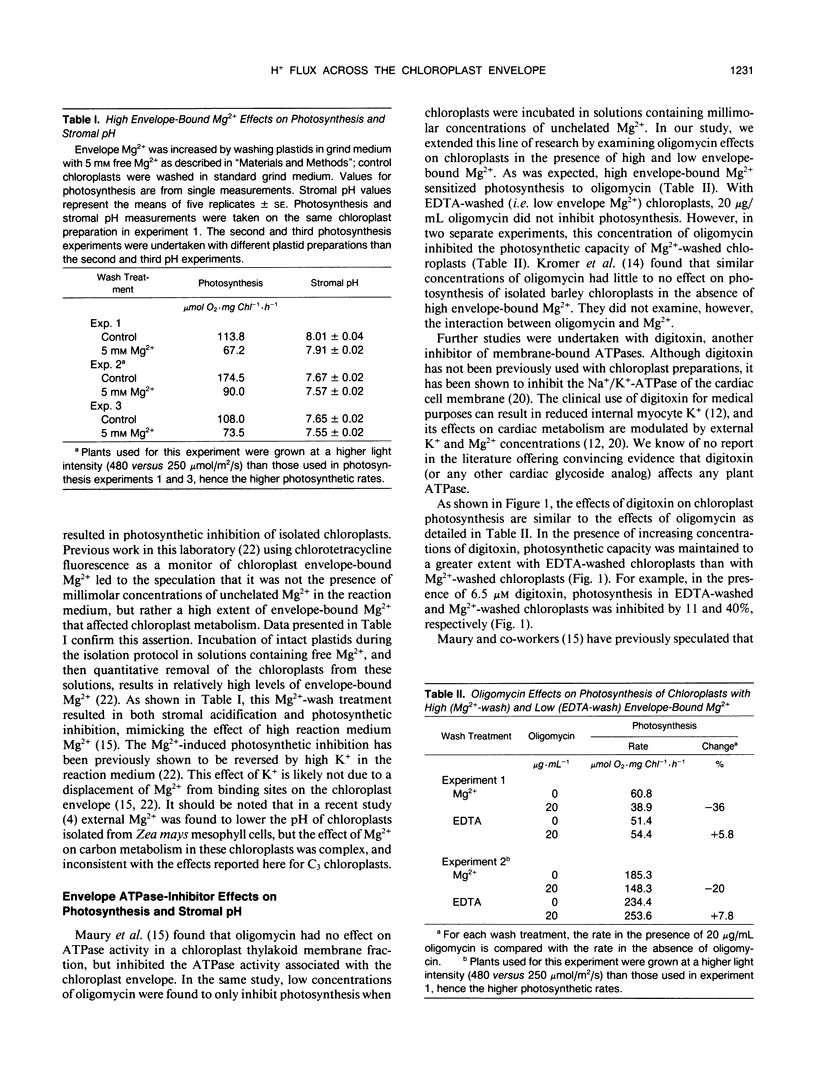
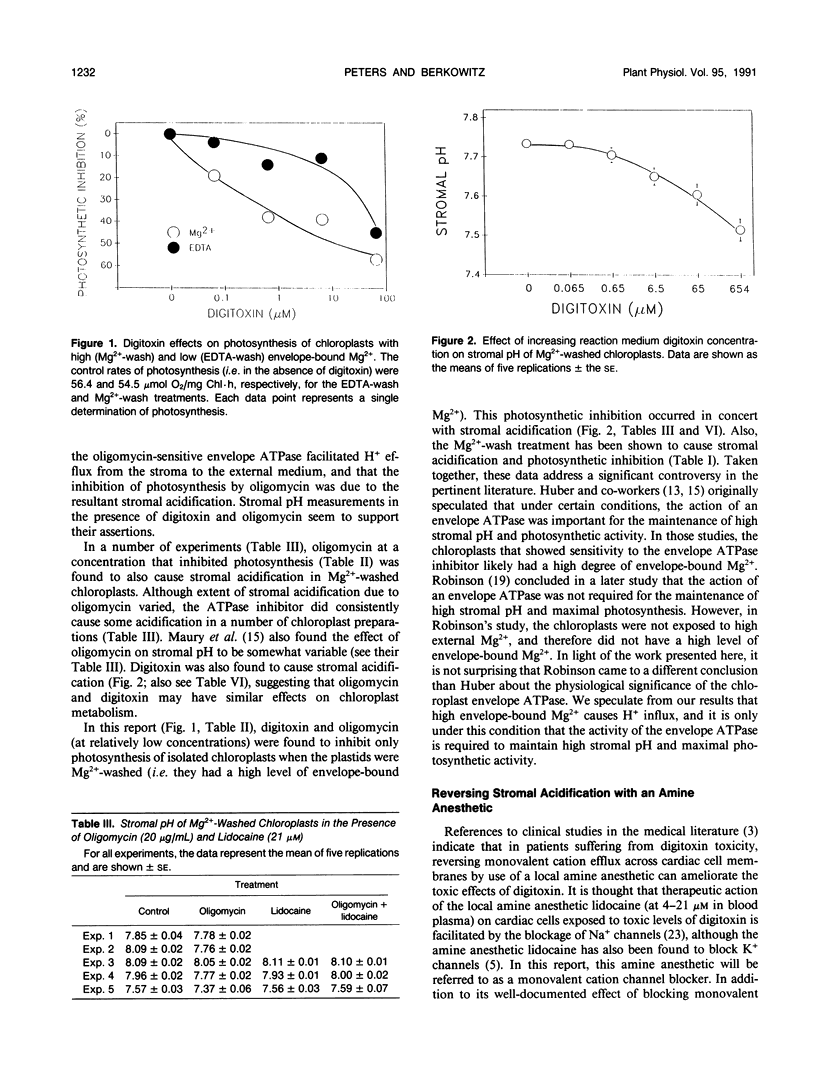
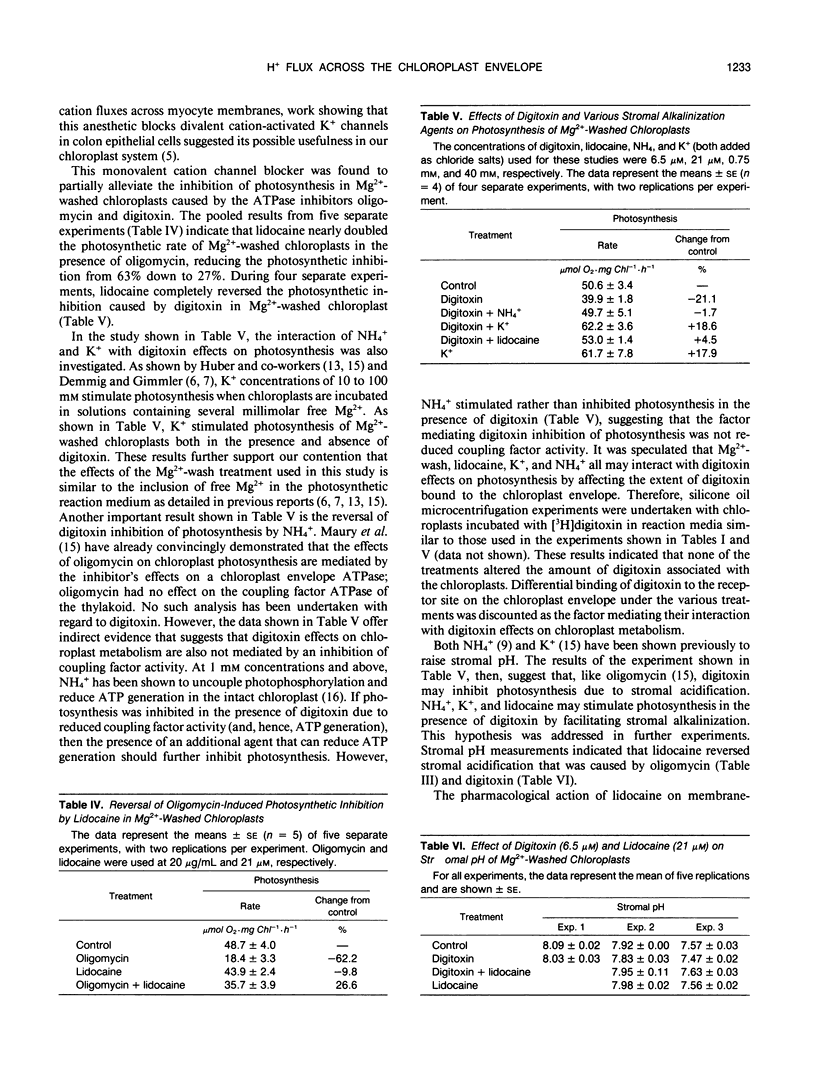
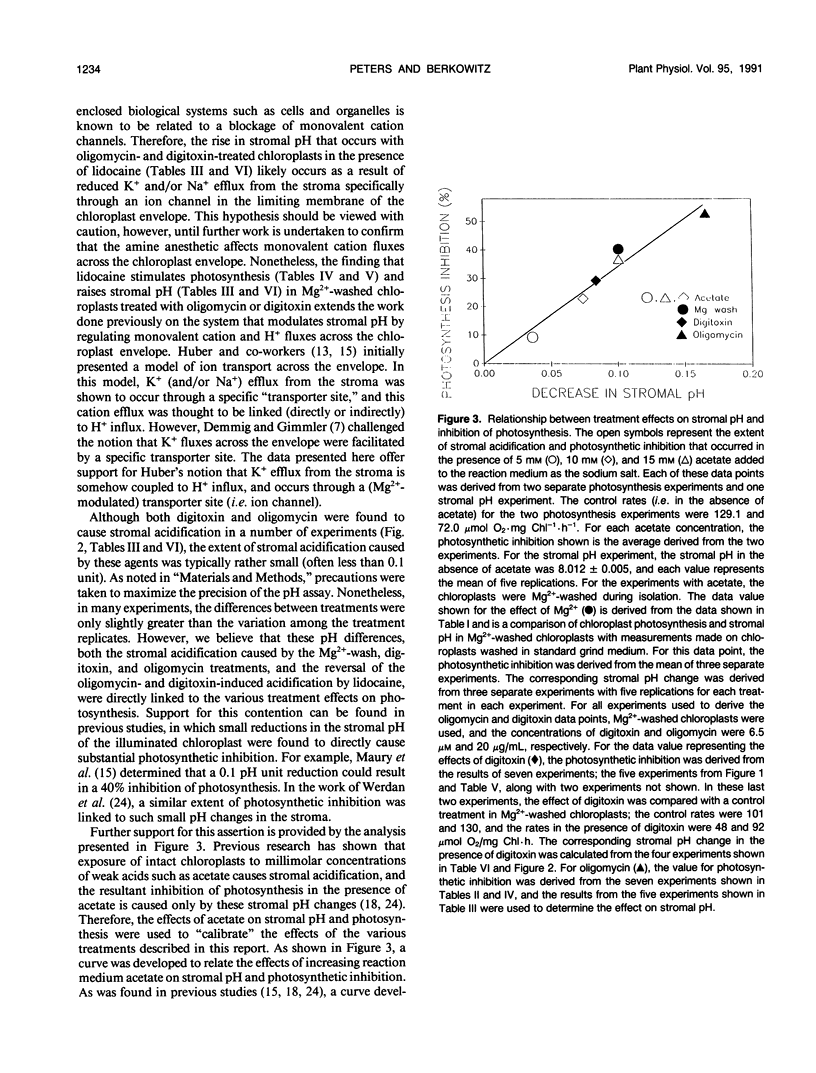
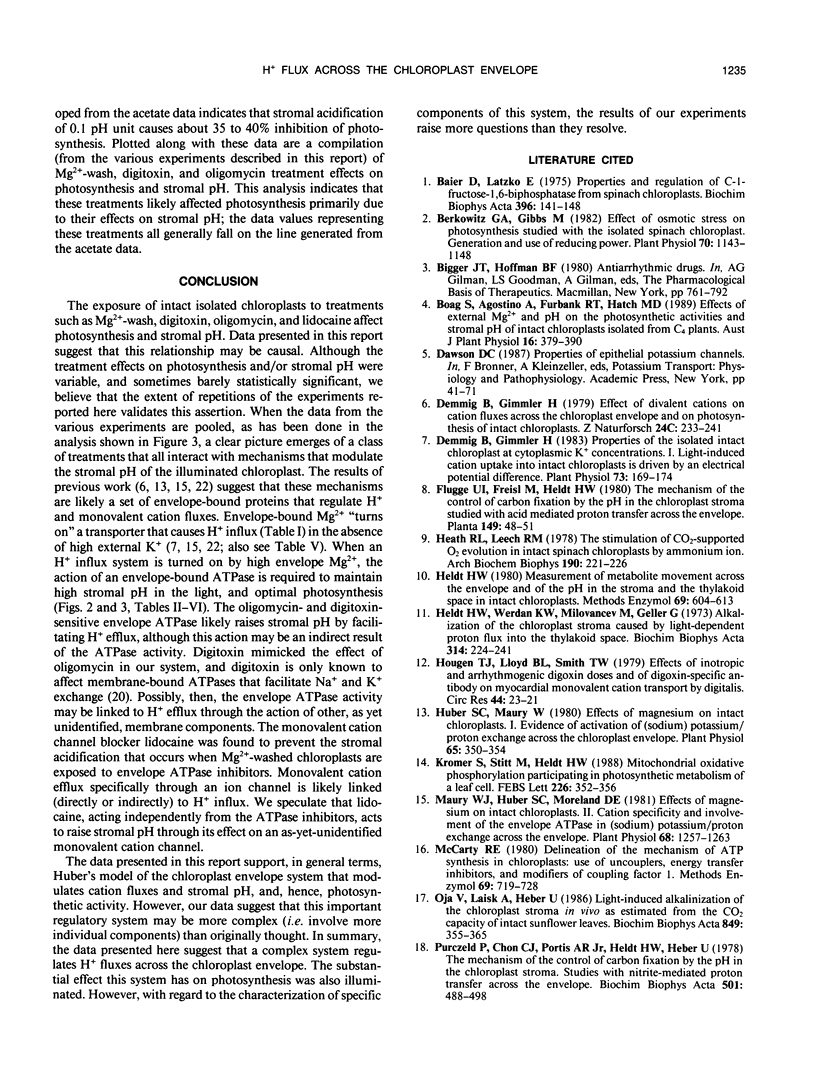

Selected References
These references are in PubMed. This may not be the complete list of references from this article.
- Baier D., Latzko E. Properties and regulation of C-1-fructose-1,6-diphosphatase from spinach chloroplasts. Biochim Biophys Acta. 1975 Jul 8;396(1):141–148. doi: 10.1016/0005-2728(75)90197-8. [DOI] [PubMed] [Google Scholar]
- Berkowitz G. A., Gibbs M. Effect of osmotic stress on photosynthesis studied with the isolated spinach chloroplast : generation and use of reducing power. Plant Physiol. 1982 Oct;70(4):1143–1148. doi: 10.1104/pp.70.4.1143. [DOI] [PMC free article] [PubMed] [Google Scholar]
- Demmig B., Gimmler H. Properties of the Isolated Intact Chloroplast at Cytoplasmic K Concentrations : I. Light-Induced Cation Uptake into Intact Chloroplasts is Driven by an Electrical Potential Difference. Plant Physiol. 1983 Sep;73(1):169–174. doi: 10.1104/pp.73.1.169. [DOI] [PMC free article] [PubMed] [Google Scholar]
- Gupta A. S., Berkowitz G. A. Chloroplast osmotic adjustment and water stress effects on photosynthesis. Plant Physiol. 1988 Sep;88(1):200–206. doi: 10.1104/pp.88.1.200. [DOI] [PMC free article] [PubMed] [Google Scholar]
- Gupta A. S., Berkowitz G. A. Development and use of chlorotetracycline fluorescence as a measurement assay of chloroplast envelope-bound mg. Plant Physiol. 1989 Mar;89(3):753–761. doi: 10.1104/pp.89.3.753. [DOI] [PMC free article] [PubMed] [Google Scholar]
- Heath R. L., Leech R. M. The stimulation of CO2-supported O2 evolution in intact spinach chloroplasts by ammonium ion. Arch Biochem Biophys. 1978 Sep;190(1):221–226. doi: 10.1016/0003-9861(78)90271-0. [DOI] [PubMed] [Google Scholar]
- Heldt W. H., Werdan K., Milovancev M., Geller G. Alkalization of the chloroplast stroma caused by light-dependent proton flux into the thylakoid space. Biochim Biophys Acta. 1973 Aug 31;314(2):224–241. doi: 10.1016/0005-2728(73)90137-0. [DOI] [PubMed] [Google Scholar]
- Hougen T. J., Lloyd B. L., Smith T. W. Effects of inotropic and arrhythmogenic digoxin doses and of digoxin-specific antibody on myocardial monovalent cation transport in the dog. Circ Res. 1979 Jan;44(1):23–31. doi: 10.1161/01.res.44.1.23. [DOI] [PubMed] [Google Scholar]
- Huber S. C., Maury W. Effects of Magnesium on Intact Chloroplasts: I. EVIDENCE FOR ACTIVATION OF (SODIUM) POTASSIUM/PROTON EXCHANGE ACROSS THE CHLOROPLAST ENVELOPE. Plant Physiol. 1980 Feb;65(2):350–354. doi: 10.1104/pp.65.2.350. [DOI] [PMC free article] [PubMed] [Google Scholar]
- Maury W. J., Huber S. C., Moreland D. E. Effects of Magnesium on Intact Chloroplasts : II. CATION SPECIFICITY AND INVOLVEMENT OF THE ENVELOPE ATPase IN (SODIUM) POTASSIUM/PROTON EXCHANGE ACROSS THE ENVELOPE. Plant Physiol. 1981 Dec;68(6):1257–1263. doi: 10.1104/pp.68.6.1257. [DOI] [PMC free article] [PubMed] [Google Scholar]
- Purczeld P., Chon C. J., Portis A. R., Jr, Heldt H. W., Heber U. The mechanism of the control of carbon fixation by the pH in the chloroplast stroma. Studies with nitrite-mediated proton transfer across the envelope. Biochim Biophys Acta. 1978 Mar 13;501(3):488–498. doi: 10.1016/0005-2728(78)90116-0. [DOI] [PubMed] [Google Scholar]
- Schwartz A., Whitmer K., Grupp G., Grupp I., Adams R. J., Lee S. W. Mechanism of action of digitalis: is the Na,K-ATPase the pharmacological receptor? Ann N Y Acad Sci. 1982;402:253–271. doi: 10.1111/j.1749-6632.1982.tb25746.x. [DOI] [PubMed] [Google Scholar]
- Werdan K., Heldt H. W., Milovancev M. The role of pH in the regulation of carbon fixation in the chloroplast stroma. Studies on CO2 fixation in the light and dark. Biochim Biophys Acta. 1975 Aug 11;396(2):276–292. doi: 10.1016/0005-2728(75)90041-9. [DOI] [PubMed] [Google Scholar]


